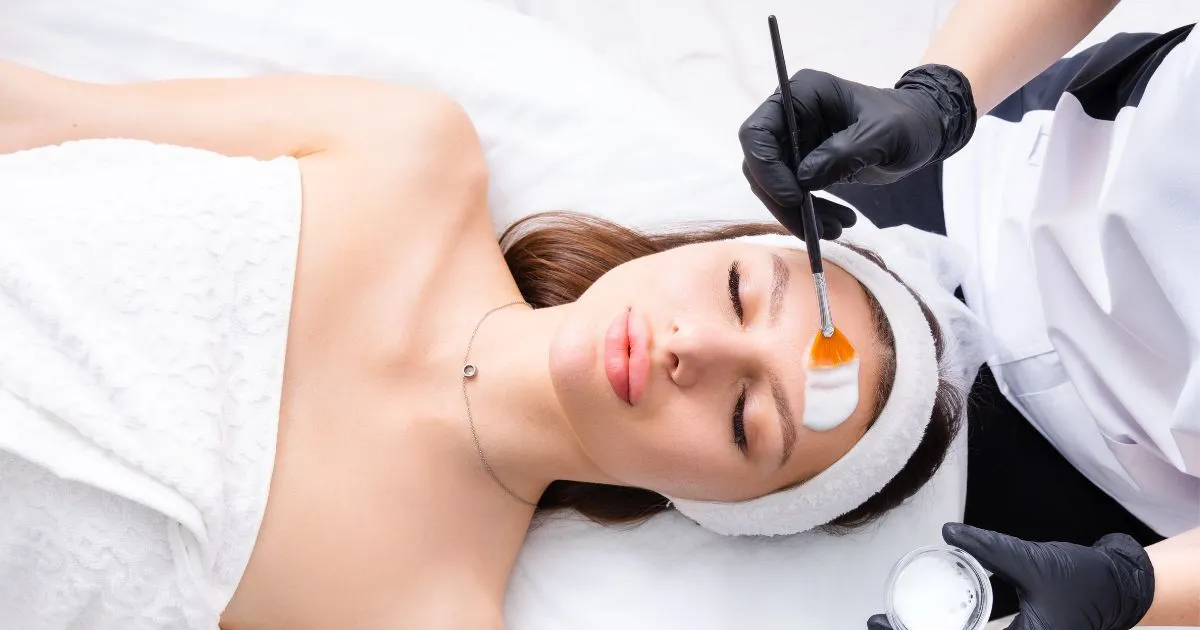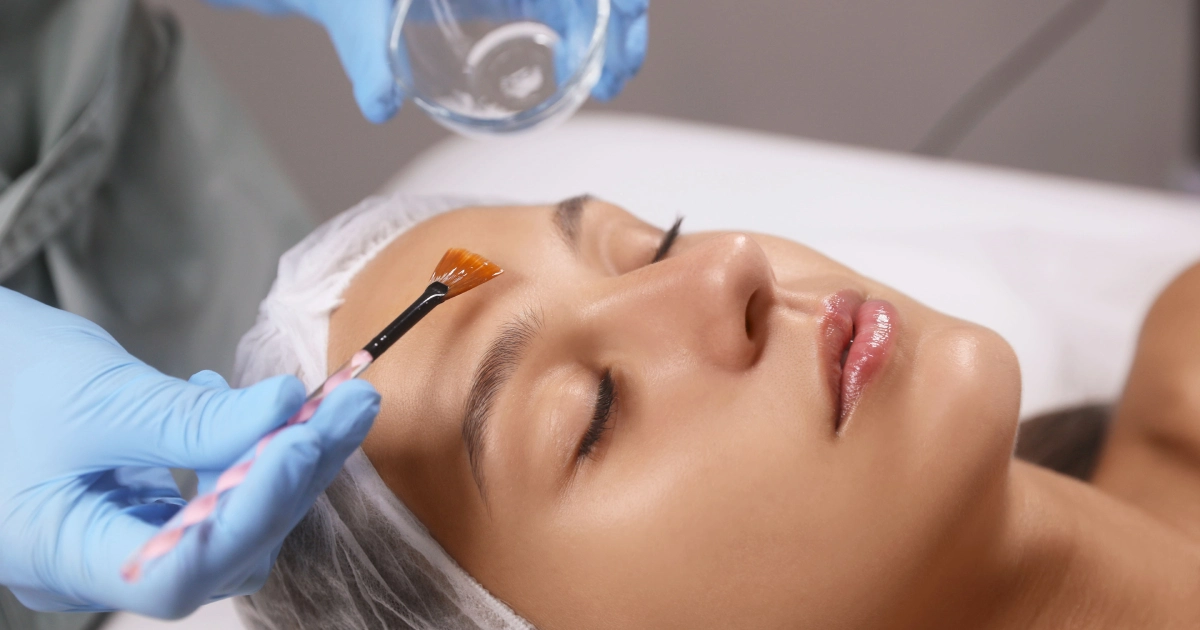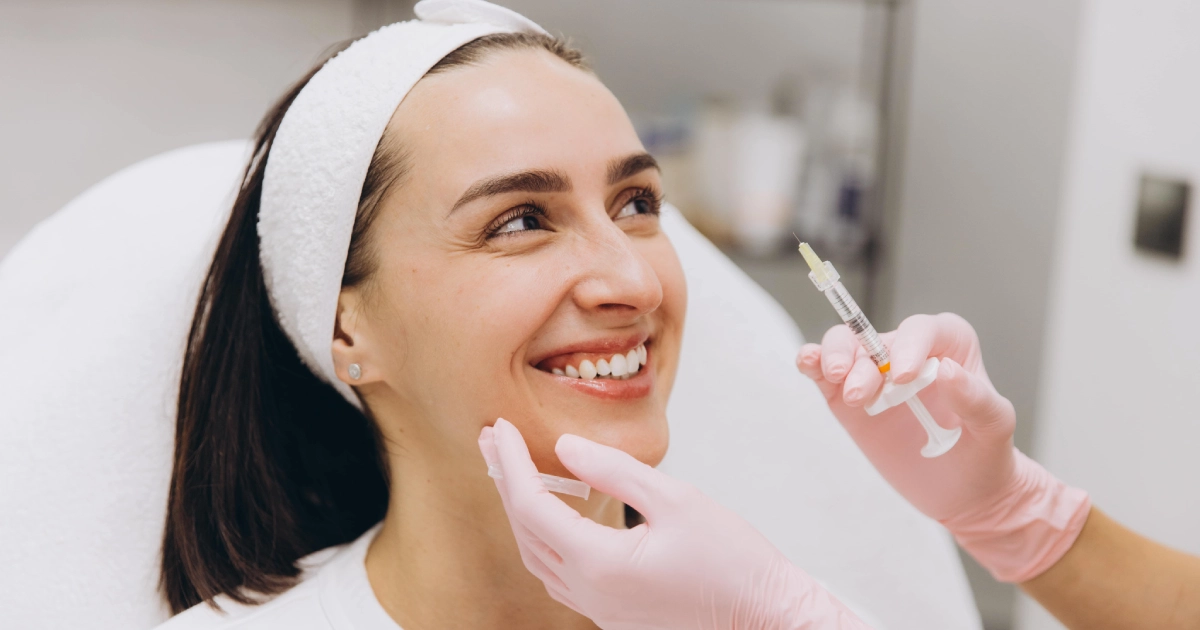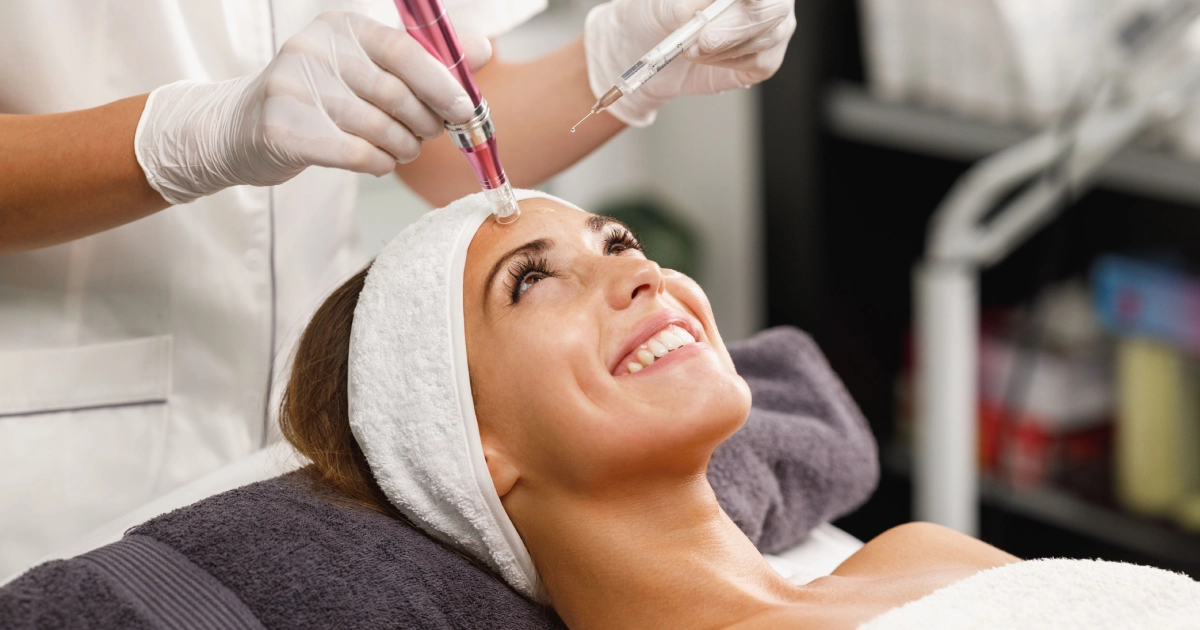Many skincare treatments have emerged over the years for a youthful skin, but few have stood the test of time, like chemical peels.
Known for their ability to transform skin texture, improve tone, and address various imperfections, chemical peels offer a solution for those seeking to rejuvenate their complexion. Whether you’re dealing with acne scars, sun damage, or signs of aging, a chemical peel can significantly improve your skin’s overall health and appearance.
If you’ve been wondering whether this treatment is right for you, let’s dive into the benefits of chemical peels and how they work to give you glowing smooth skin.
What Are Chemical Peels?
Chemical peels are non-invasive skin treatments that involve applying a chemical method to the skin to exfoliate and peel away the damaged outer layers. The goal is to reveal fresh skin underneath while stimulating collagen production and cell turnover.
How Do Chemical Peels Work?
A carefully selected solution—usually containing acids such as glycolic, salicylic, lactic, or trichloroacetic (TCA)—is applied to the skin during a chemical peel approach. This solution works by breaking down the bonds that hold dead skin cells together. As these damaged layers are removed, new, healthy skin emerges, giving you a smoother, brighter complexion.
Chemical peels come in various strengths, from superficial peels targeting the outermost layer of skin to deeper peels penetrating the middle layers for more dramatic results. Your aesthetician or dermatologist will choose the right type of peel based on your skin type, concerns, and desired results.
Benefits of Chemical Peels: Why Choose This Treatment?
There’s a reason chemical peels have remained a go-to treatment for skin rejuvenation for decades. Their benefits are far-reaching, offering improvements for various skin concerns.
1. Exfoliates and Smooths the Skin
The most immediate benefit of a chemical peel is smoother, more refined skin. By removing the top layer of dead skin cells, chemical peels reveal fresh skin that looks brighter and feels softer. This deep exfoliation also unclogs pores and helps reduce the occurrence of breakouts, making chemical peels a great option for those with acne-prone skin.
2. Reduces Fine Lines and Wrinkles
Aging is inevitable, but the right treatments can minimize its effects on the skin. Chemical peels help reduce the appearance of fine lines and wrinkles by promoting collagen production.
Collagen is a protein providing skin its firmness and elasticity, and as we age, our collagen production naturally decreases. Regular chemical peels stimulate collagen, leading to smoother, more youthful skin.
3. Improves Skin Tone and Texture
Uneven skin tone and texture are usual concerns from sun damage, acne, or hyperpigmentation. Chemical peels are highly effective at evening skin tone by fading dark spots, reducing redness, and improving overall texture. Whether you’re dealing with rough patches, acne scars, or discoloration, a chemical peel can help create a more uniform complexion.
4. Minimizes Pore Size
Large, visible pores can be frustrating and often contribute to acne breakouts. Chemical peels work to minimize the appearance of pores by deep cleaning them and removing the buildup of dead skin and oil that can stretch them out.
Over time, regular chemical peels can lead to smaller, less noticeable pores, giving your skin a smoother, refined look.
5. Treats Acne and Prevents Future Breakouts
If you struggle with persistent acne, a chemical peel could be the solution you’ve been searching for. Peels containing salicylic acid are particularly effective for treating acne, as they penetrate deep into the pores to dissolve oil and debris that cause breakouts.
Not only do chemical peels help clear up existing acne, but they can also reduce the risk of future breakouts by keeping pores clean and free of buildup.
Types of Chemical Peels: Which One Is Right for You?
Not all chemical peels are the same, and choosing the right one depends on your skin type, concerns, and goals. Understanding the different types of peels can help you determine which treatment is best for you.
Superficial Peels
Superficial or light peels are the gentlest form of chemical peels and typically use mild acids like glycolic or lactic acid. These peels only penetrate the outermost layer of skin, making them ideal for those looking for a mild exfoliation to improve texture and brightness. Superficial peels are a great choice for individuals with sensitive skin or those who want minimal downtime.
Medium Peels
Medium peels penetrate deeper into the skin and often use stronger acids such as TCA (trichloroacetic acid). These peels effectively treat more significant skin concerns, including fine lines, wrinkles, and hyperpigmentation. While there may be some peeling and redness in the days following a medium peel, the results are more noticeable than a superficial peel.
Deep Peels
Deep peels provide the most intense exfoliation for those seeking dramatic improvements. These peels use strong acids like phenol to reach the middle layer of the skin, making them effective for treating deep wrinkles, severe sun damage, and significant scarring. Due to their intensity, deep peels require a longer recovery period but offer long-lasting, transformative results.
What to Expect During a Chemical Peel Treatment
Knowing what to expect during and after the treatment can help you prepare for the process and achieve the best results if you’re considering a chemical peel.
The Treatment Process
The chemical peel procedure is relatively quick and typically takes 30 to 60 minutes. First, your skin will be thoroughly cleansed, and then the chemical solution will be carefully applied to the treatment area. Depending on the strength of the peel, you may feel a mild tingling or burning sensation as the solution works to exfoliate the skin.
After the designated time, the solution will be neutralized and removed, and a soothing moisturizer or sunscreen will be applied. For deeper peels, your provider may recommend specific aftercare products to help with healing.
Post-Treatment Care and Recovery
The recovery process varies depending on the type of peel you receive. Superficial peels require minimal downtime, with some light peeling or flaking in the days following treatment. Medium and deep peels, on the other hand, may result in more noticeable peeling, redness, and swelling, which can last for several days or weeks.
After your peel, you must protect your skin from the sun by wearing sunscreen daily and avoiding direct sun exposure. Your skin will be more sensitive following the treatment, so proper post-care is crucial for optimal results.
How Often Should You Get a Chemical Peel?
The frequency of chemical peel treatments depends on your skin type, concerns, and the peel used. Superficial peels can be done every four to six weeks, making them an excellent option for regular maintenance. Medium peels may be done every three to six months, while deep peels are typically a one-time treatment or performed less frequently due to their intensity.
Consulting with a licensed professional is the best way to determine the right treatment plan for your needs.
Our Final Thoughts at Spruce Medical Aesthetics
Chemical peels offer incredible benefits for anyone looking to rejuvenate their skin, improve tone and texture, and address various common skin concerns.
Whether you’re struggling with acne or hyperpigmentation, or simply want a brighter complexion, chemical peels can help you achieve smoother, more youthful-looking skin.
Call for the best chemical peel treatment in Hershey, PA, and take the first step toward transforming your skin today! See you around here at Spruce Medical Aesthetics!






